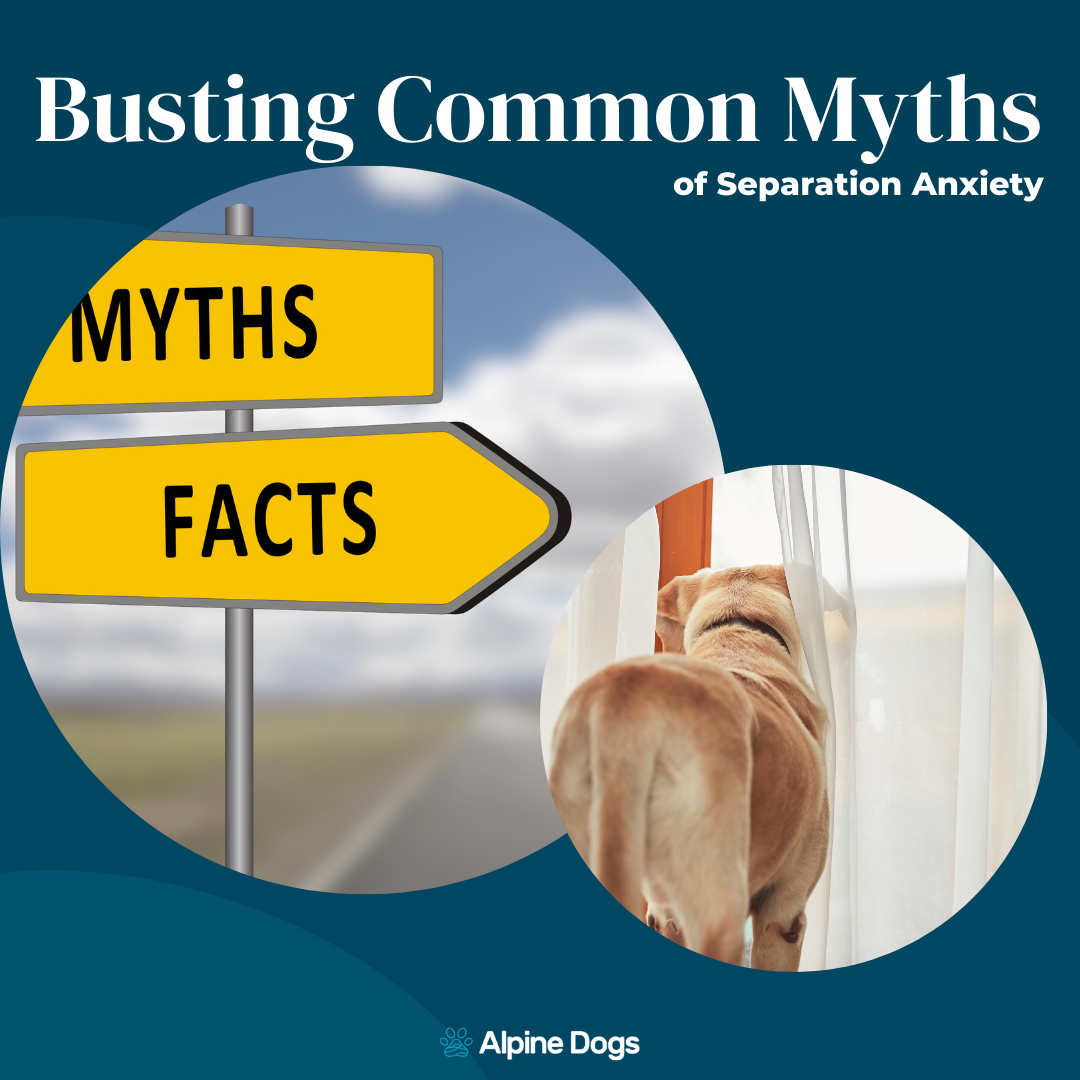If your dog panics when you leave them home alone, you may have tried giving them a food toy in your absence.
It makes sense, right?
Give them something extra special so that they associate you leaving with that awesome thing. And with enough repetition, your dog’s separation anxiety will be replaced by happy anticipation, right?
Sadly, no. I truly wish it could be that simple.
But like most things, it’s more complicated than that.
Using food in separation anxiety training is problematic in a number of ways. At best, it will keep you stuck and at worst, it will set you back.
There are four main concerns that I have about using food in separation anxiety training:
- We want your dog to be neutral about your departure
- We want to see how your dog is truly feeling about your absence (and food can mask that)
- We want your dog to be okay when there is no food
- We don’t want food to predict your departure
Let’s look at each concern a bit more closely.
We want your dog to be neutral about being alone.
Being alone is boring. But separation anxiety dogs have big opinions about alone time. And while it may seem logical to simply replace that negative emotion with a positive one, that simply isn’t sustainable. Most of my separation anxiety clients have alone-time goals of four+ hours. Your dog simply can’t be elated and anticipatory that whole time.
They need to learn to be blasé, not blissful, about absences.
So what’s the gold standard state of being for your dog when alone? I want them to be neutral enough to take a nap. That’s when I know that my clients are on the right track: Their dog is so apathetic about their absence that they fall asleep.
They can’t do that if they’re chomping on a bully stick or pawing at the treat dispensing toy, can they?
We want to see how your dog is truly feeling about your absence.
A huge part of my client’s separation anxiety training journey is learning how to gauge their dog’s emotional state. They know when their dog is panicking: scratching at the door, refusing to eat their favorite food, vocalizing heavily, etc. But the more subtle signs of discomfort can often go unnoticed. And here’s the thing: Noticing those subtle signs before they escalate to full-blown panic and returning to your dog is everything.
It can make all the difference between lasting behavior change and teetering back and forth between progress and setbacks.
And food can mask those subtle signs. Ever felt stressed out and found yourself perusing the pantry? You’re not alone. Food can certainly numb uncomfortable feelings. But what happens when you’ve finished off that sleeve of Oreos? The discomfort that brought you to them is still there. It was never gone in the first place.
And the same is true for our dogs.
We want your dog to be okay when there is no food.
But let’s assume that the food isn’t masking lower-level anxiety. Let’s assume that it’s actually changing your dog’s negative emotional state to a positive one. Food is the answer then, right?
Wrong.
Because as creative as you might get to make the duration of those food toys stretch, they will eventually dry up. And what then? We need a clear 1:1 ratio of alone:food for counterconditioning to work. And as soon as your dog is alone with no food, that ratio is gone.
We don’t want food to predict your departure.
Us behavior geeks are familiar with the dangers of backwards conditioning – a pairing in which something awesome comes before something awful. The result? That awesome thing predicts the awful thing, and pretty quickly it isn’t so awesome.
Imagine a kid who gets an ice cream cone right before they get a shot. After a few shots, that kid is going to become pretty wary of ice cream cones in that context. They may even start to dislike ice cream cones all together. (We could of course swap the order of events and actually teach the kid to be okay with getting shots, but that’s another article!)
Can you see how this would play out in separation anxiety training?
You break out a masterfully stuffed Kong and your dog remembers the last time you did that, and the panic that ensued. Now, they aren’t excited about the Kong. In fact, they’re apprehensive about it. Because they know what it predicts.
Conclusion: Reserve food for all of your other training endeavors.
I would be remiss not to say that I am a strong proponent of the use of food in training. I use tons of it in pretty much every other aspect of dog training and behaviour modification. And I encourage you to be frequent and generous with your food rewards.
But separation anxiety training is the one outlier.
My separation anxiety protocol relies on a technique called systematic desensitization, which is just a fancy way to say that I introduce absences brief enough that your dog won’t care about, and build from there.
Book a FREE discovery session with me to learn more about my approach. And because separation anxiety training is all done remotely, I can help you no matter where you are located.
